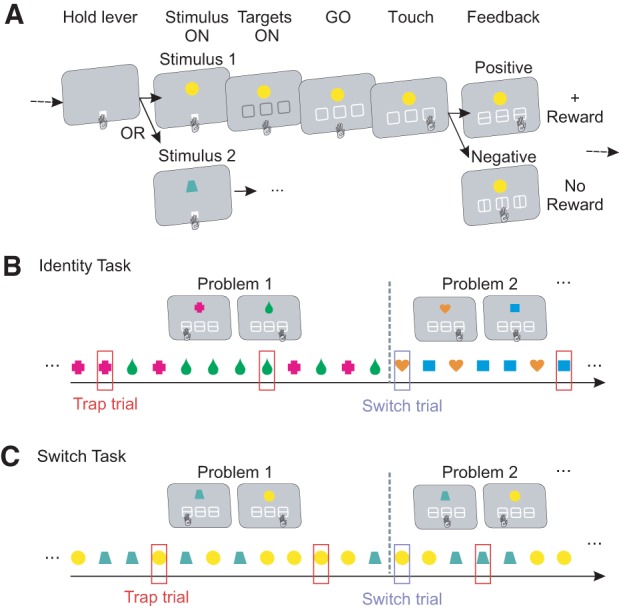Figure 1.

Task design. (A) Structure of a single trial—common to both tasks. The monkey holds a touch screen “lever” to initiate the task, and then selects one of the three targets in response to a central stimulus. Monkeys learn about two stimuli concurrently. Positive or negative visual feedback is horizontal or vertical bars, respectively. Positive feedback was followed by the delivery of a juice reward. (B) Identity Task. Each problem comprised two mappings, between each of the two stimuli and a single target. One stimulus at a time was randomly presented. On Trap trials, misleading feedback was given: positive feedback with a juice reward after an incorrect choice; negative feedback with no reward after a correct choice. Trap trials occurred pseudorandomly with P = 0.1. After a performance criterion (17/20 correct responses), the problem changed (Switch trial), and two new mappings with two new stimuli were randomly selected. (C) Switch Task. Identical to the Identity Task, except that stimuli remained the same when the problem changed. Only the mappings between stimuli and responses changed. Thus, Switches between problems were not visually detectable.
